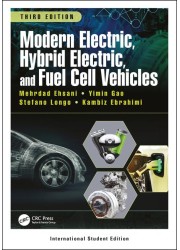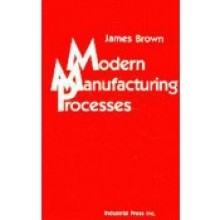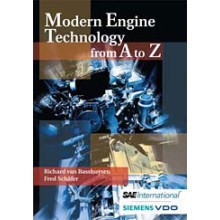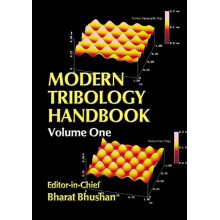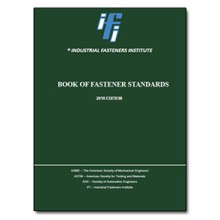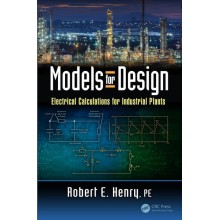Modern Electric, Hybrid Electric, and Fuel Cell Vehicles 3rd Edition - 2018
ISBN: 9781138330498
Author: Mehrdad Ehsani, Yimin Gao, Stefano Longo, Kambiz Ebrahimi
Dispatch Time: 15 - 30 Days
Our Price: £49.50
Discount : 10%
Quantity:
-
Add to Compare
Table of Contents
1. Environmental Impact and History of Modern Transportation
1.1 Air Pollution
1.2 Global Warming
1.3 Petroleum Resources
1.4 Induced Costs
1.5 Importance of Different Transportation Development Strategies to Future Oil Supply
1.6 History of EVs
1.7 History of HEVs
1.8 History of Fuel Cell Vehicles
References
2. Fundamentals of Vehicle Propulsion and Brake
2.1 General Description of Vehicle Movement
2.2 Vehicle Resistance
2.3 Dynamic Equation
2.4 Tire–Ground Adhesion and Maximum Tractive Effort
2.5 Power Train Tractive Effort and Vehicle Speed
2.6 Vehicle Performance
2.7 Operating Fuel Economy
2.8 Brake Performance
References
3. Internal Combustion Engines
3.1 Spark Ignition (SI) Engine
3.2 Compression Ignition (CI) Engine
3.3 Alternative Fuels and Alternative Fuel Engines
References
4. Vehicle Transmission
4.1 Power Plant Characteristics
4.2 Transmission Characteristics
4.3 Manual Gear Transmission (MT)
4.4 Automatic Transmission
4.5 Continuously Variable Transmission
4.6 Infinitely Variable Transmissions (IVT)
4.7 Dedicated Hybrid Transmission (DHT)
References
5. Hybrid Electric Vehicles
5.1 Concept of Hybrid Electric Drivetrains
5.2 Architectures of Hybrid Electric Drivetrains
References
6. Electric Propulsion Systems
6.1 DC Motor Drives
6.2 Induction Motor Drives
6.3 Permanent Magnetic BLDC Motor Drives
6.4 SRM Drives
References
7. Design Principle of Series (Electrical Coupling) Hybrid Electric Drivetrain
7.1 Operation Patterns
7.2 Control Strategies
7.3 Design Principles of a Series (Electrical Coupling) Hybrid Drivetrain
7.4 Design Example
References
8. Parallel (Mechanically Coupled) Hybrid Electric Drivetrain Design
8.1 Drivetrain Configuration and Design Objectives
8.2 Control Strategies
8.3 Parametric Design of a Drivetrain
8.4 Simulations
References
9. Design and Control Methodology of Series–Parallel (Torque and Speed Coupling) Hybrid Drivetrain
9.1 Drivetrain Configuration
9.2 Drivetrain Control Methodology
9.3 Drivetrain Parameters Design
9.4 Simulation of an Example Vehicle
References
10. Design and Control Principles of Plug-In Hybrid Electric Vehicles
10.1 Statistics of Daily Driving Distance
10.2 Energy Management Strategy
10.3 Energy Storage Design
References
11. Mild Hybrid Electric Drivetrain Design
11.1 Energy Consumed in Braking and Transmission
11.2 Parallel Mild Hybrid Electric Drivetrain
11.3 Series–Parallel Mild Hybrid Electric Drivetrain
References
12. Peaking Power Sources and Energy Storages
12.1 Electrochemical Batteries
12.2 Ultracapacitors
12.3 Ultra-High-Speed Flywheels
12.4 Hybridization of Energy Storages
References
13. Fundamentals of Regenerative Braking
13.1 Braking Energy Consumed in Urban Driving
13.2 Braking Energy versus Vehicle Speed
13.3 Braking Energy versus Braking Power
13.4 Braking Power versus Vehicle Speed
13.5 Braking Energy versus Vehicle Deceleration Rate
13.6 Braking Energy on Front and Rear Axles
13.7 Brake System of EV, HEV, and FCV
References
14. Fuel Cells
14.1 Operating Principles of Fuel Cells
14.2 Electrode Potential and Current–Voltage Curve
14.3 Fuel and Oxidant Consumption
14.4 Fuel Cell System Characteristics
14.5 Fuel Cell Technologies
14.6 Fuel Supply
14.7 Non-Hydrogen Fuel Cells
References
15. Fuel Cell Hybrid Electric Drivetrain Design
15.1 Configuration
15.2 Control Strategy
15.3 Parametric Design
15.4 Design Example
References
16. Design of Series Hybrid Drivetrain for Off-Road Vehicles
16.1 Motion Resistance
16.2 Tracked Series Hybrid Vehicle Drivetrain Architecture
16.3 Parametric Design of the Drivetrain
16.4 Engine/Generator Power Design
16.5 Power and Energy Design of Energy Storage
References
17. Design of Full-Size Engine HEV with Optimal Hybridization Ratio
17.1 Design Philosophy of Full-Size Engine HEV
17.2 Optimal Hybridization Ratio
17.3 10–25 kW Electrical Drive Packages
17.4 Comparison with Commercially Available Passenger Cars
References
18. Power Train Optimization
18.1 Power Train Modeling Techniques
18.2 Defining Performance Criteria
18.3 Power Train Simulation Methods
18.4 Modular Power Train Structure
18.5 Optimization Problem
18.6 Case Studies: Optimization of Power Train Topology and Component Sizing
References
19. A User Guide for the Multiobjective Optimization Toolbox
19.1 About the Software
19.2 Software Structure
19.3 Capabilities and Limitations of the Software
Appendix: Technical Overview of Toyota Prius
Index
Write a review
Your Name:Your Review: Note: HTML is not translated!
Rating: Bad Good
Enter the code in the box below:
Copyright © 2014 Engineering Standards Bureau. All Rights Reserved.
Developed By Zoom Into Web


